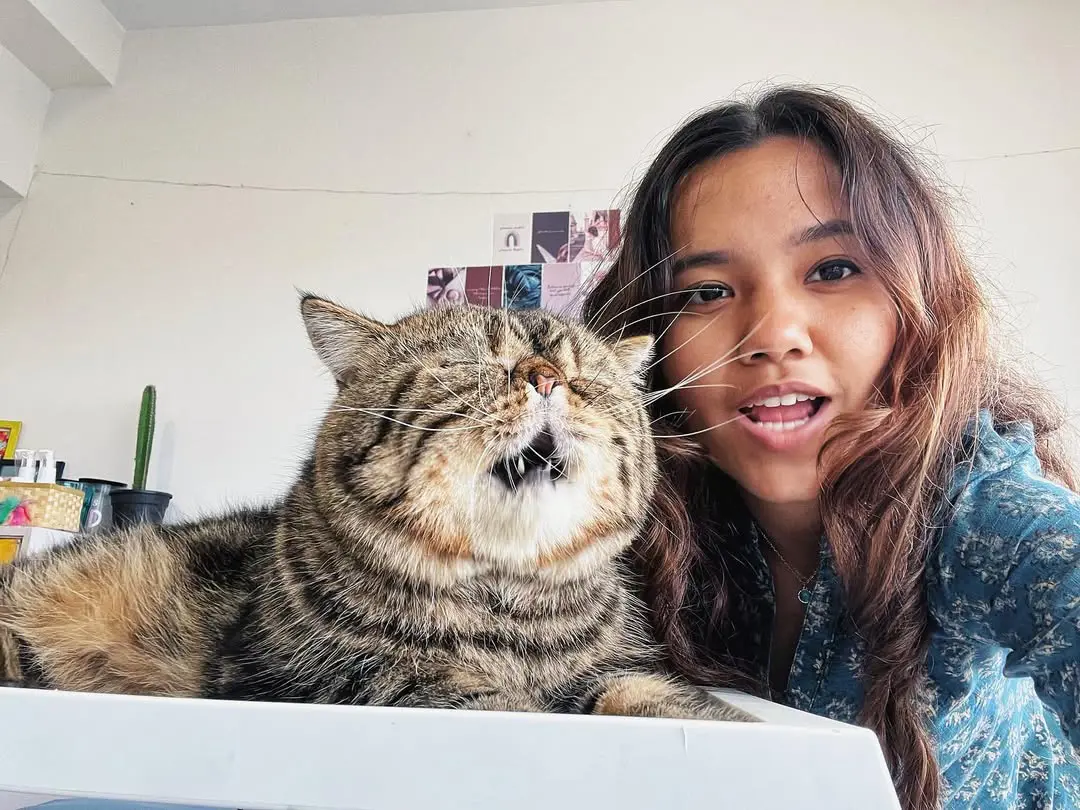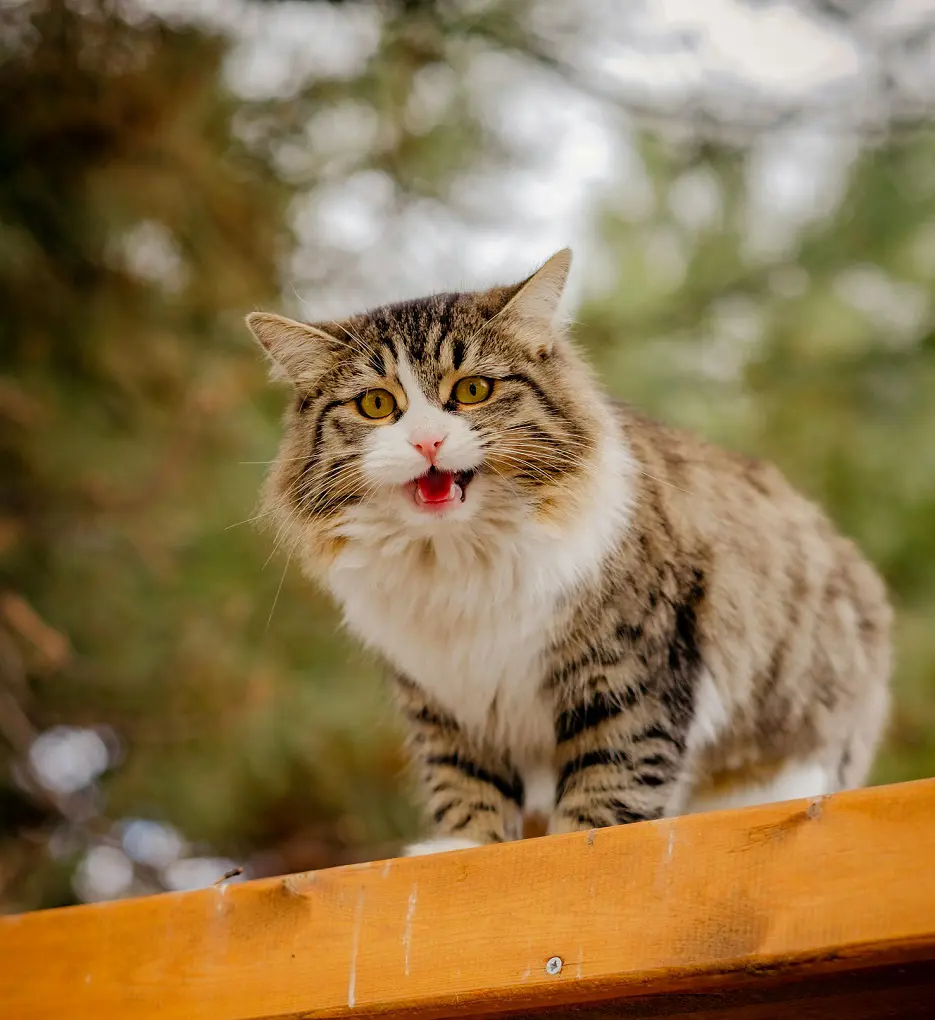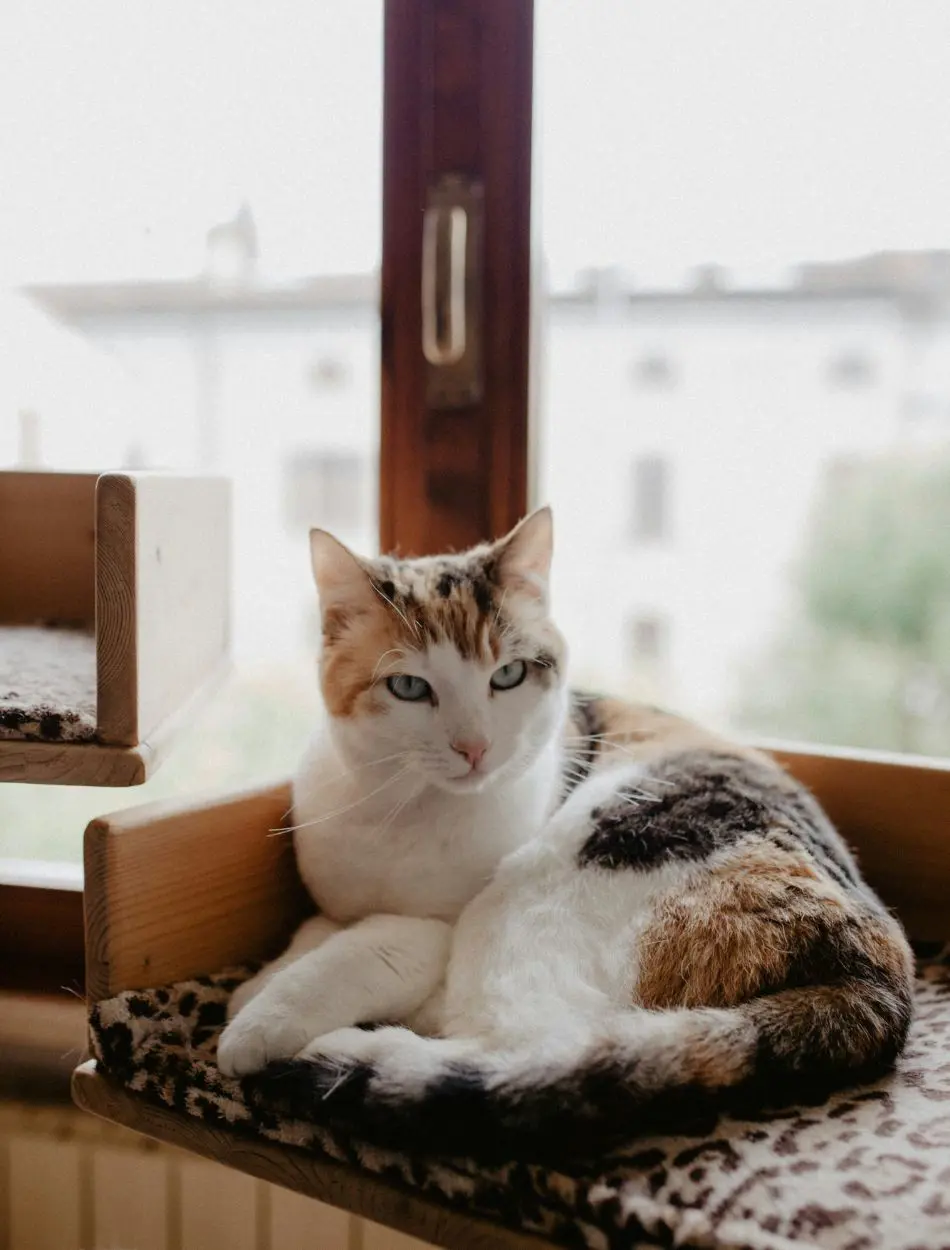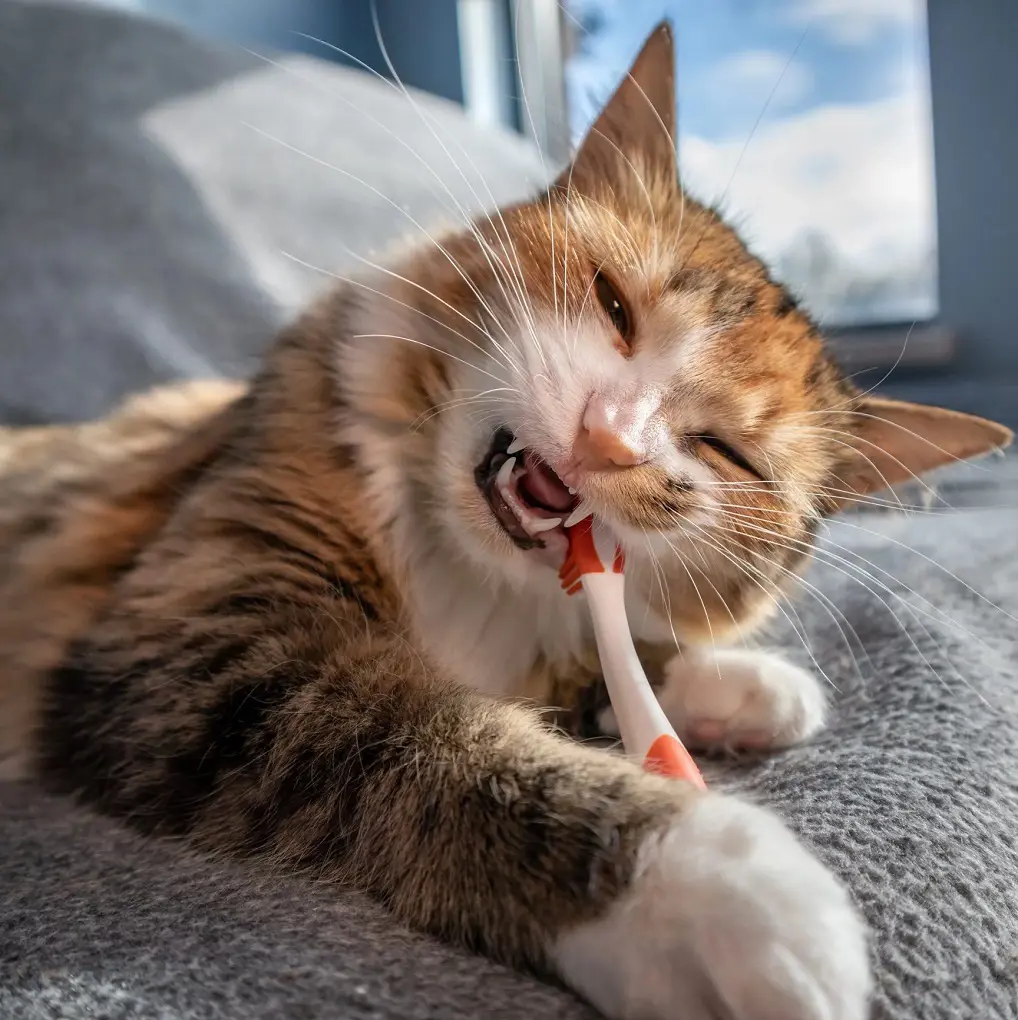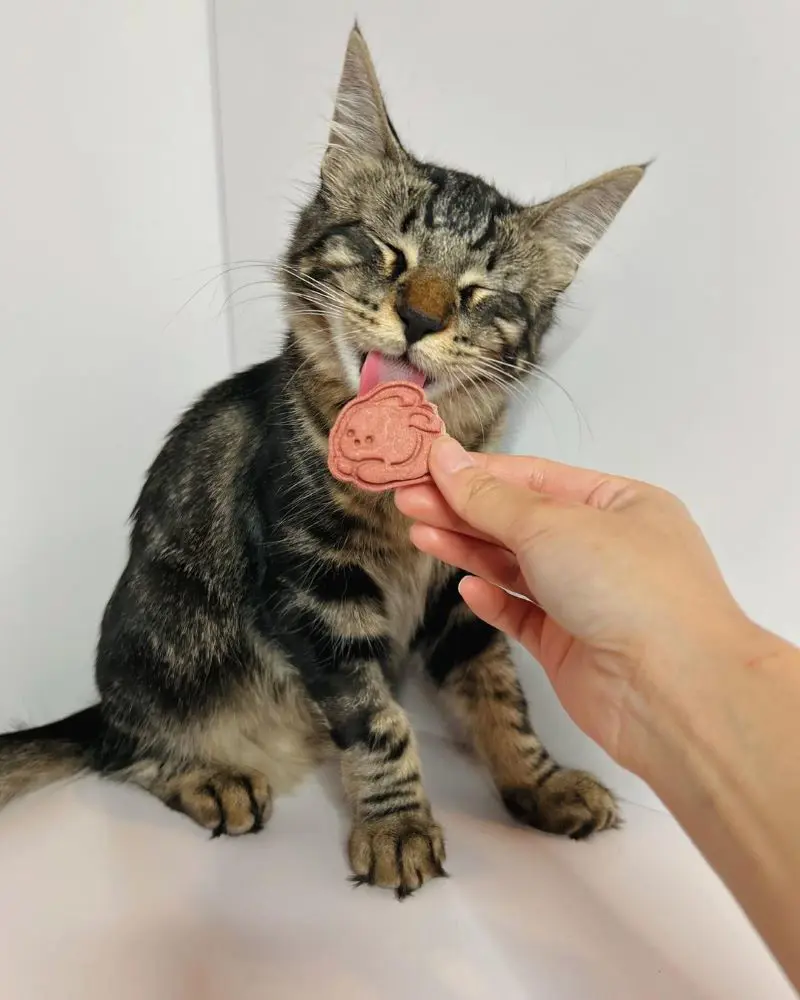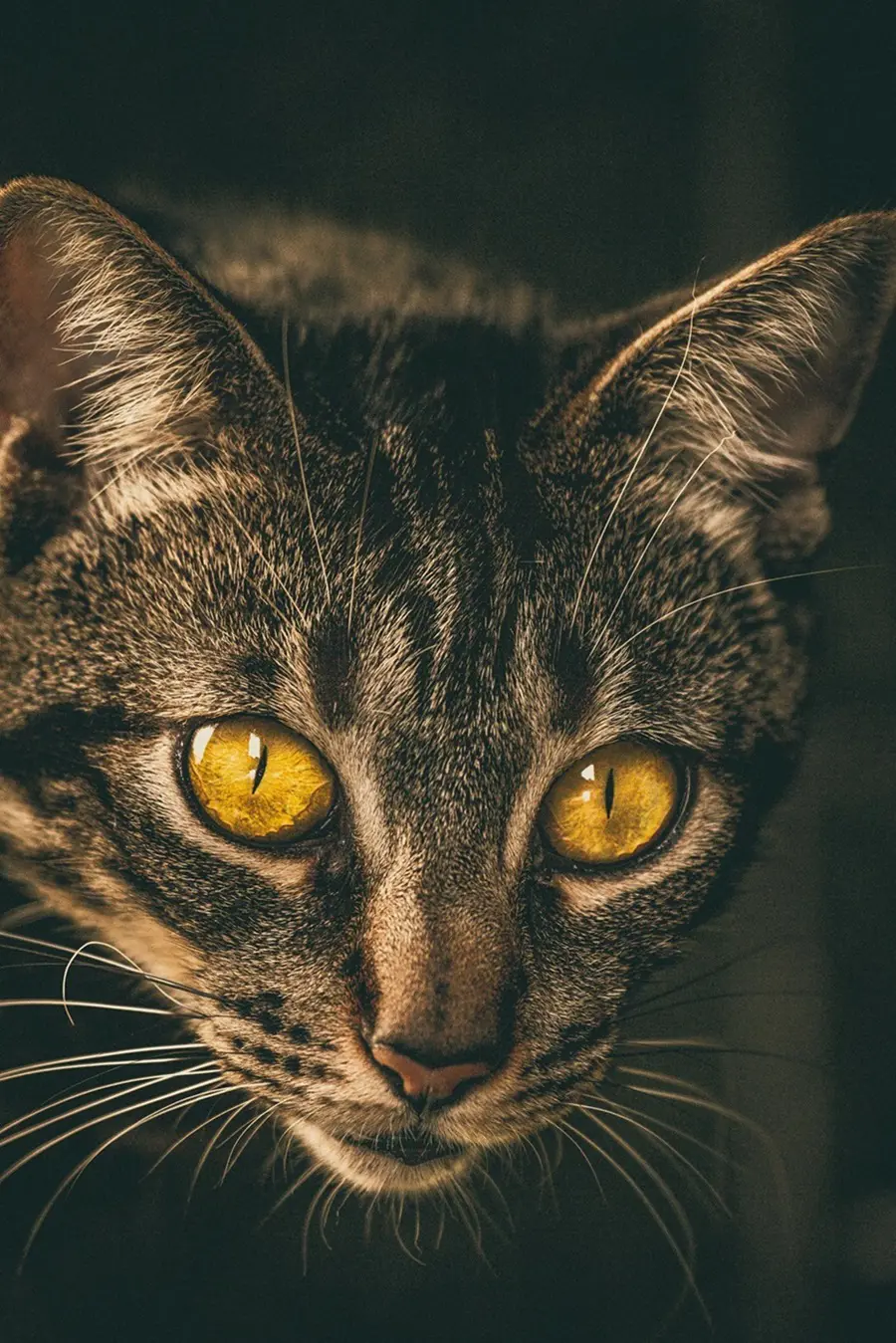Can Cats See In The Dark? Facts About Cats Night Vision
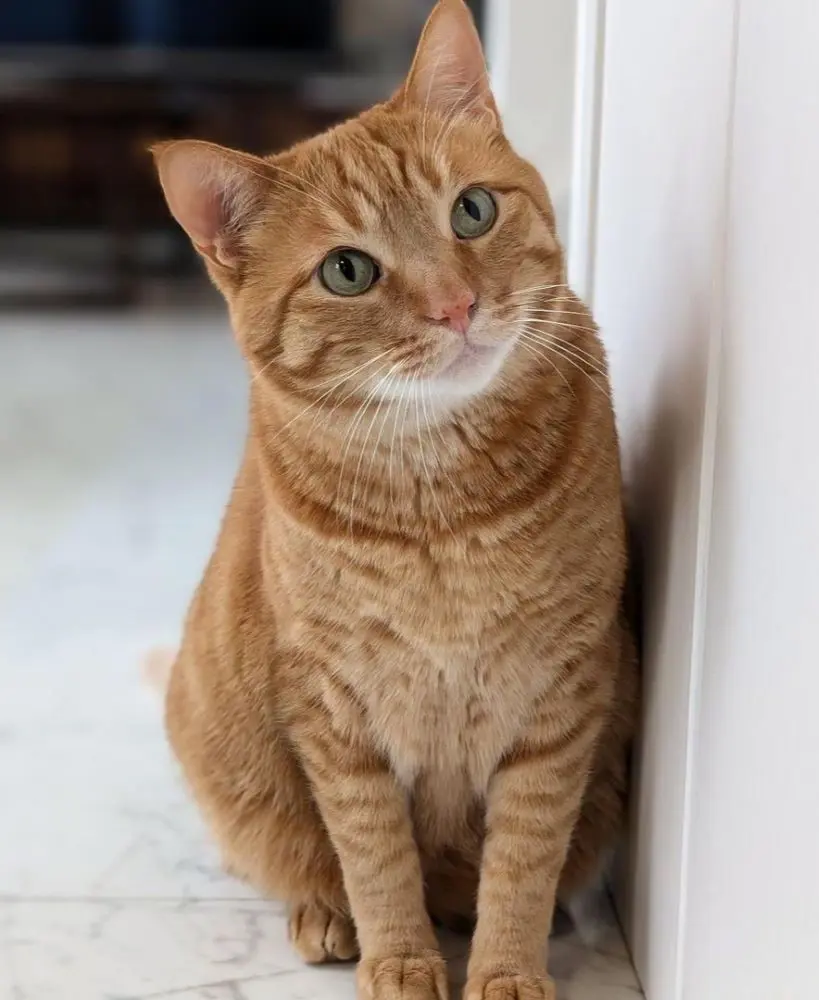
Cats depend heavily on their sense of sight to hunt. While not as sharp in detail as human vision, cats have better low-light vision, allowing them to navigate easily during dawn and dusk.
Cats are estimated to have about 20/100 to 20/200 vision, meaning they see at 20 feet what a human with normal vision can see at 100/200 feet. Their peripheral vision is significantly wider than that of humans, approximately 200 degrees compared to humans' roughly 180 degrees. This peripheral vision also aids their night vision by covering a wider area under low-light conditions.
Follow this exclusive guide for everything to know about cat night vision!
Can Cats See In The Dark?
While cats don't perfectly see in the dark, they are exceptionally well-adapted to low-light conditions. Their eyes have many rod cells, which are more sensitive to dim light than the cone cells responsible for color vision. Additionally, cats possess a reflective layer behind their retinas called the tapetum lucidum. It enhances their ability to see in low light by reflecting light that passes through the retina back into their eyes.
This adaptation allows them to hunt effectively at dawn and dusk, times when their prey is most active. While cats can't see in total darkness, their night vision is significantly better than that of humans, allowing them to navigate and see in much lower light levels.
Can Cats See In Complete Darkness
Cats cannot see in complete darkness, as their vision still requires some light to function. However, they are adept at navigating in near-darkness.
Meanwhile, in complete darkness, cats rely on their other senses to navigate. Their whiskers, or vibrissae, are highly sensitive to changes in air currents and can detect nearby objects, helping them avoid obstacles. Additionally, cats have excellent hearing, allowing them to detect even the faintest sounds. Their sense of smell is also highly developed, aiding in navigation and locating food or other animals. These combined sensory adaptations enable cats to move confidently and efficiently, even when their vision is limited.
What Is Too Dark For Cats?
While humans typically need a light level of around 10-15 lumens to see in low-light conditions, cats can see effectively with as little as 1-2 lumens. Therefore, a brightness level below 1 lumen would be considered too dark for cats to see effectively. In such extremely low-light conditions, their vision would be insufficient, and they would rely more on their other senses to navigate.
Additionally, a completely dark environment with no light source at all would be too dark for cats to see effectively. Ideal lighting conditions for a cat's vision range from dim light to twilight, such as during dawn or dusk, which aligns with their crepuscular nature.
Different levels of brightness can affect a cat's vision in various ways. In bright light, a cat's pupils constrict into slits to reduce the amount of light entering their eyes and prevent overstimulation. Likewise, in low-light conditions, their pupils dilate widely to maximize light intake. Prolonged exposure to extremely bright light can be uncomfortable and potentially harmful to a cat's eyes, while complete darkness can limit their visual capabilities.
Cats Night Vision

Cats possess excellent night vision, allowing them to see well in low-light conditions. Due to their hunting nature, felines are well-adapted to detect movements and shapes in dim lighting.
Cats are crepuscular, meaning they are most active during dawn and dusk, rather than being strictly nocturnal. This behavior is believed to have evolved to maximize hunting efficiency. Many of their prey animals, such as rodents, are also active during these times. By being active when their prey is most available, cats increase their chances of a successful hunt. Additionally, being active during these low-light periods helps cats avoid larger predators that might hunt during the day or night.
Moreover, their evolutionary history as solitary hunters has further shaped their behavior and physical adaptations. Domestic cats retain many of these traits, remaining active at night and displaying hunting behaviors even in the safety of a home environment. This natural inclination is why pet cats often exhibit bursts of energy and playfulness during the early morning and late evening hours.
Cat Eye Shape Helps In Vision
Cat eyes are uniquely shaped with large, round corneas and vertically slit pupils. This distinctive eye structure evolved to enhance their vision in low-light conditions. The large corneas allow more light to enter the eye, maximizing visibility in dim environments.
Meanwhile, vertically slit pupils can dilate significantly in low light, enabling cats to capture as much light as possible, and can constrict to a narrow slit in bright light, reducing the amount of light entering the eye to protect it from overstimulation.
The evolution of vertically slit pupils is particularly beneficial for predators who need to judge distance accurately for hunting. This pupil shape provides a wider range of control over the amount of light entering the eye, offering both precision in focusing on prey and protection against sudden changes in light levels. The ability to quickly adjust their vision in varying light conditions allows cats to remain effective hunters during dawn, dusk, and nighttime when their prey is most active.
Can Cats See Infrared Light?
Infrared (IR) light is a type of electromagnetic radiation with longer wavelengths than visible light, ranging from about 700 nanometers to 1 millimeter. These are mostly used in night vision goggles to help cats see at night.
Humans cannot see infrared light because our eyes are not equipped with photoreceptor cells that can detect these longer wavelengths. Instead, our eyes are sensitive to wavelengths from approximately 380 to 750 nanometers, which corresponds to the spectrum of visible light.
Cats, like many other animals, cannot see infrared light in the way that they see visible light. However, they can sense infrared radiation through other means. This ability comes from specialized sensory organs called pit organs or pit sensory hairs located on their faces. These organs are highly sensitive to infrared radiation emitted by warm-blooded animals, such as prey or potential threats.
The pit organs detect the heat given off by these animals, allowing cats to perceive their presence even in dark or low-light conditions. This infrared sensitivity enhances a cat's hunting prowess, helping them locate and stalk prey effectively, especially in environments where visibility is limited.
Cat Cats Detect Colors At Night?
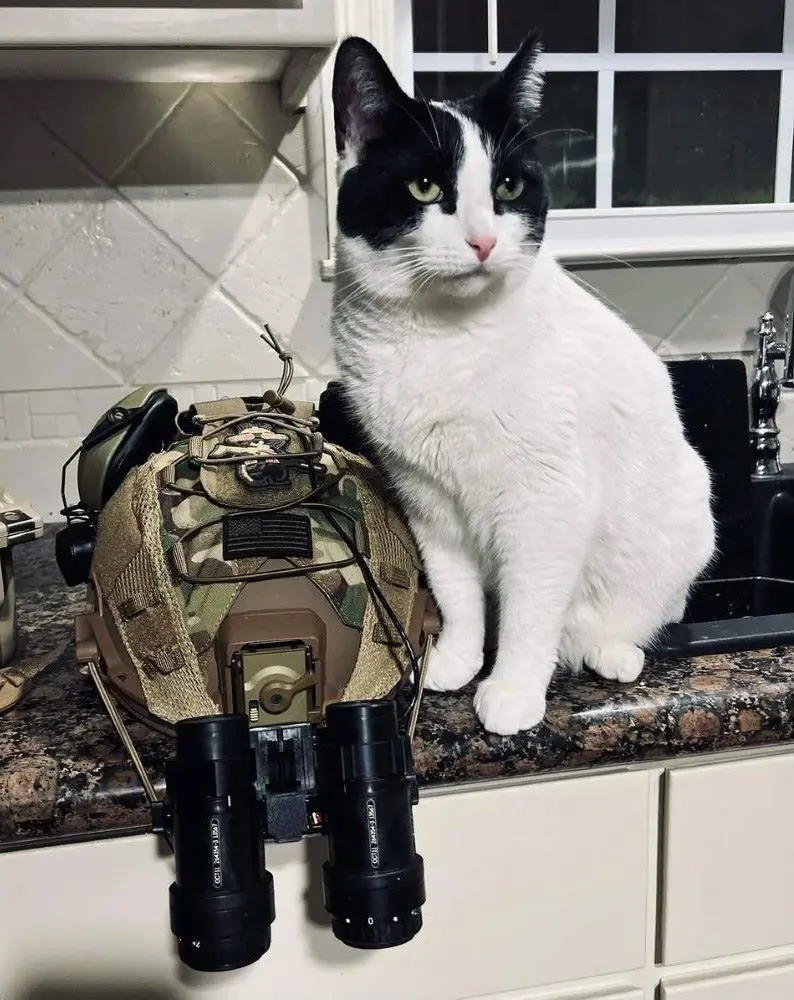
Cats' ability to detect colors is limited both during the day and at night. While they are not completely color blind, cats have a reduced ability to distinguish between different colors compared to humans. Their color vision is dichromatic, meaning they primarily see shades of blue and green, and they have difficulty distinguishing between reds and oranges, which appear more as shades of gray or brown to them.
At night, cats primarily rely on their rod cells, which are highly sensitive to low levels of light but do not contribute significantly to color vision. Therefore, while cats may still perceive some color differences during dim lighting conditions, their ability to detect colors is much less pronounced compared to their daytime vision.
While cats do have some limited ability to perceive colors, this capability is diminished in low-light conditions, such as at night. Their vision is better suited for detecting movement and navigating in dim light rather than discerning fine details of color.
Cats Can See In Dark Better Than Dogs
Cats generally have better night vision compared to dogs due to their unique anatomical adaptations. Their eyes are specifically adapted for low-light conditions, with a high density of rod cells in their retinas that are highly sensitive to dim light. Additionally, cats have a reflective layer behind their retinas, which enhances their night vision by reflecting light that passes through the retina back into the eye, effectively giving their photoreceptor cells a second chance to capture light.
While dogs also have some adaptations for seeing in low light, such as a tapetum lucidum and larger pupils that allow more light to enter the eye, their night vision is generally not as acute as that of cats. Dogs rely more on movement and their keen sense of smell and hearing when hunting or navigating in low-light environments. However, individual differences exist among breeds and species of both cats and dogs, influencing their specific abilities to see in the dark.
Animals With Better Night Vision Than Cats
Here are some animals that can see better than cats at night:
- Owls: These nocturnal birds have extremely large eyes with a high concentration of rod cells and a large tapetum lucidum. This allows them to hunt effectively in complete darkness.
- Tarsiers: These small primates have enormous eyes relative to their body size and are adapted for nocturnal hunting, with excellent night vision.
- Bats: Most bats have excellent night vision adapted for navigating and hunting insects in the dark using echolocation and sensitive eyesight.
- Lemurs: Nocturnal lemurs, like the Aye-aye, have large eyes and specialized retinas for enhanced night vision, crucial for their arboreal lifestyle.
- Fruit Bats: This bat variety has excellent night vision for finding fruit in low-light conditions. Their large eyes and acute rod cell sensitivity aid in searching for their food.
- Geckos: Nocturnal geckos have large, sensitive eyes with well-developed rods for detecting prey and predators in the dark.
- Fennec Foxes: These desert foxes have large ears and eyes adapted for nocturnal activity/ It helps them in hunting and avoiding predators in low-light environments.
- Serval Cats: These wild cats have proportionally large eyes and a keen sense of sight adapted for hunting at night in their African habitats.
- Nocturnal Birds of Prey: These birds have specialized eyes and retinas for hunting insects and small mammals at night.
- Deep-Sea Fish: These fish have adapted to their dark, deep-sea environments with bioluminescent organs and highly sensitive eyes for detecting prey in the darkness.
Reasons For Cat Losing Night Vision
Cats can experience a loss of their ability to see at night due to various factors, although it's not common in healthy cats. Loss of night vision can occur due to age-related changes, certain health conditions affecting the eye, optic nerves, or injuries.
These are some possible causes that can lead to a decline in a cat's night vision:
Aging
As cats age, the lenses in their eyes may become less clear, causing reduced light transmission and increased scattering of light. Additionally, the retina may undergo degenerative changes, including a decrease in the number and efficiency of rod cells responsible for low-light vision.
These age-related changes can result in diminished sensitivity to dim light and slower adaptation of the pupils, impairing the cat's ability to see in low-light conditions such as at night or in dimly lit environments. Regular veterinary care can help monitor and manage age-related changes in a cat's vision.
Eye Diseases
Cats are prone to eye diseases like cataracts, glaucoma, progressive retinal atrophy (PRA), and uveitis. Cataracts are characterized by clouding of the eye's lens, which can obstruct light and lead to blurred vision or blindness if untreated. Similarly, glaucoma involves increased pressure within the eye, potentially damaging the optic nerve and causing vision loss.
Of these diseases, cataracts and progressive retinal atrophy (PRA) are particularly relevant to night vision loss in cats. Cataracts interfere with light transmission to the retina, reducing the cat's ability to see in dim light. PRA specifically affects the retina's ability to process light, progressively diminishing the cat's night vision over time.
Vitamin Deficiency
Vitamin deficiencies, especially vitamin A, can lead to night vision loss in cats. Vitamin A is essential for maintaining the health of the retina and the functioning of photoreceptor cells, including rods that are crucial for low-light vision. Without sufficient vitamin A, cats may experience impaired vision in dim light and difficulty seeing in the dark.
To fulfill their vitamin requirements and prevent deficiencies, cats should be fed a balanced and complete diet that meets their nutritional needs. High-quality commercial cat foods are formulated to provide the necessary vitamins and minerals, including vitamin A. It's important to avoid feeding cats homemade diets without proper veterinary guidance, as deficiencies can occur if the diet is not balanced.
Trauma or Injury
Traumas or injuries to a cat's eyes or optic nerves can lead to loss of night vision by causing structural damage or disrupting the normal function of these vital components. Direct trauma, such as blows to the head or injuries to the eyes themselves, can damage the delicate tissues of the eye, including the retina or lens, which are critical for low-light vision.
Optic nerve injuries can impair the transmission of visual signals from the eye to the brain, affecting the cat's ability to process and interpret visual information.
Top Lists
